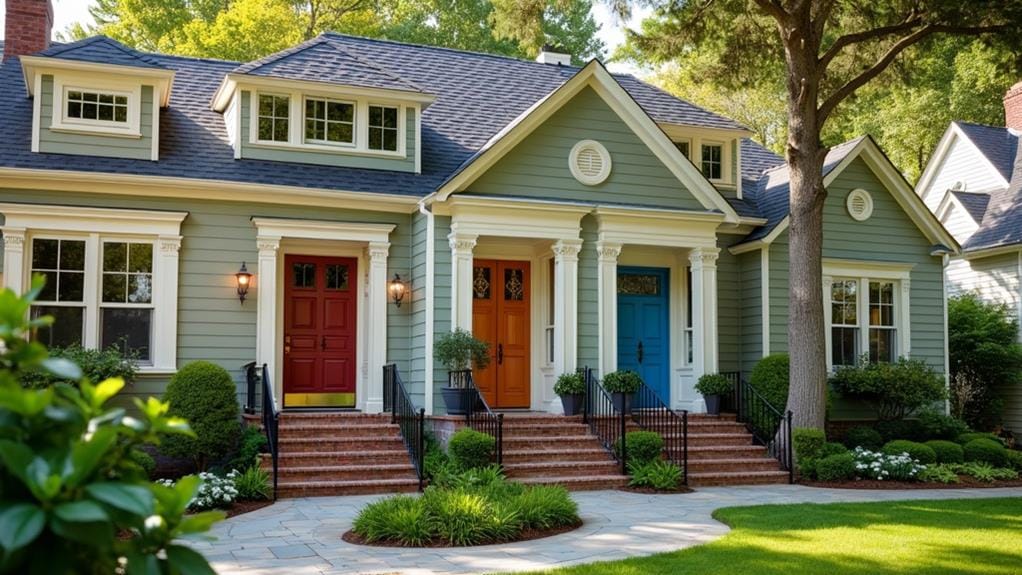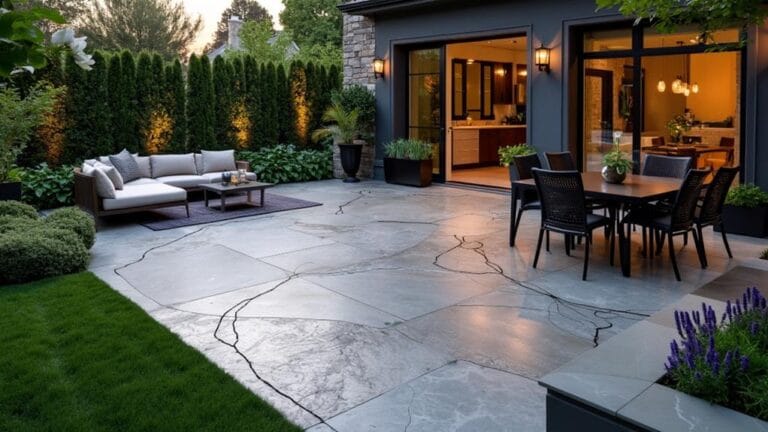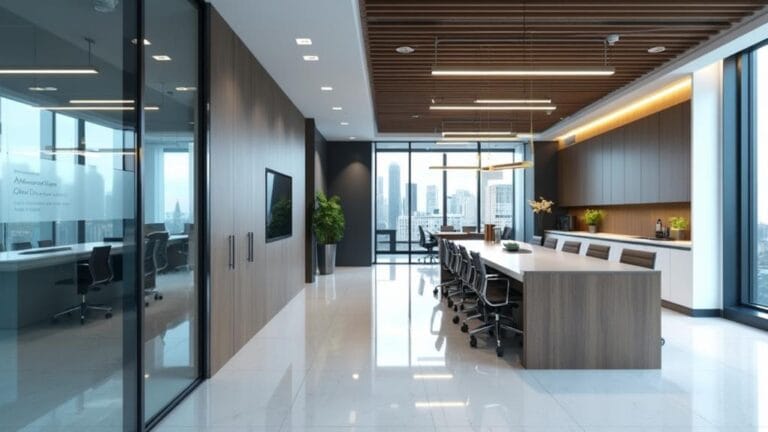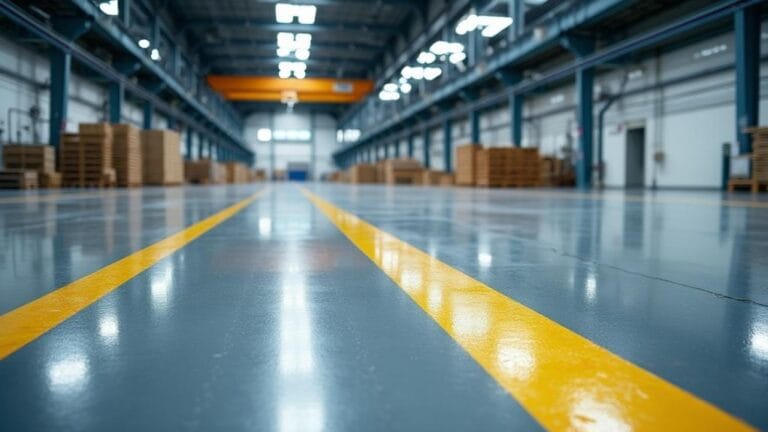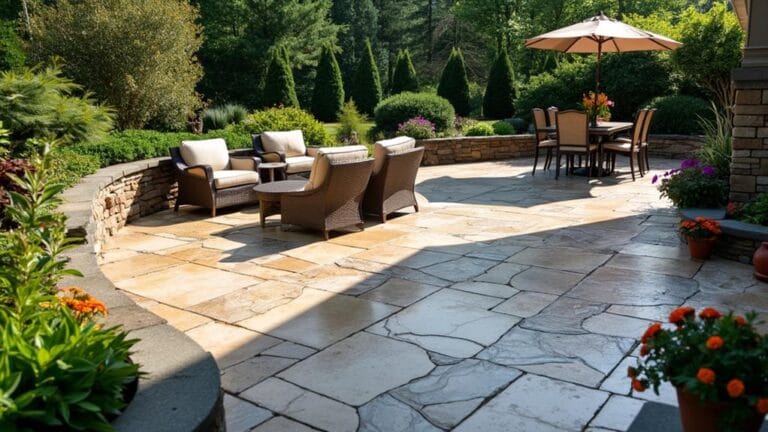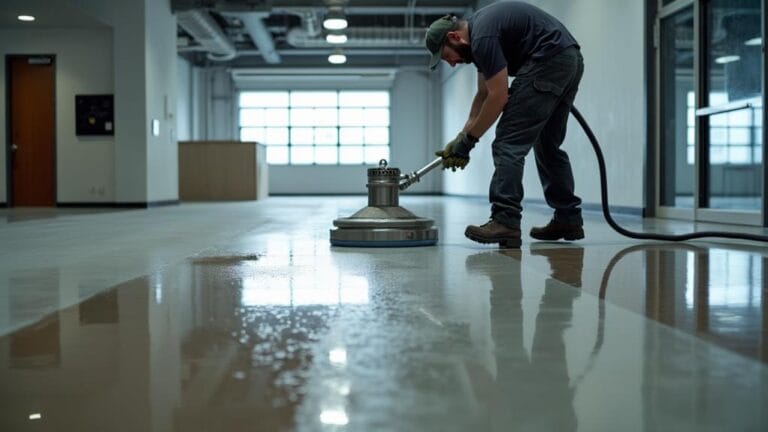Residential Decorative Refinishing Contractors Near You
Let's revamp your home with outstanding residential decorative refinishing contractors near you. We recognize how enhancing your living space's aesthetics and functionality can make a difference. Decorative concrete is a cost-effective alternative to large-scale renovations, offering durable, low-maintenance, and visually appealing options like stamped patterns and polished surfaces. To guarantee high-quality results, choose contractors with solid credentials and proven work quality. Proper surface preparation is vital for long-lasting beauty. If you're curious about types of finishes, cost estimates, or maintenance tips, we have you taken care of. Uncover how simple it is to boost your home's appeal.
Importance of Decorative Refinishing
Decorative refinishing holds significant value for homeowners aiming to improve the aesthetics and functionality of their living spaces. When we think about upgrading our homes, we often focus on large-scale renovations, but refinishing surfaces can offer a more cost-effective and visually satisfying alternative. One excellent option to evaluate is the Acrylistain System Overview, which provides a rich, warm look that can transform various areas of your home. By keeping up with current design trends, we can guarantee that our home stays stylish and modern.
Why is surface preparation so vital? Well, proper preparation is the foundation of any successful refinishing project. Before we apply any decorative finishes, we need to make certain the surface is clean, smooth, and free of imperfections. This not only improves the final look but additionally boosts the durability of the finish. Skipping this step can result in poor adhesion and a less appealing outcome.
When we choose to refinish surfaces, we're investing in both the beauty and practicality of our spaces. Fresh finishes can breathe new life into old floors, countertops, and walls. They can reflect our personal style while making our home more enjoyable and comfortable. By understanding the importance of decorative refinishing, we can make knowledgeable choices that uplift our living environments and keep us in tune with evolving design trends.
Types of Decorative Concrete Finishes
When it comes to enhancing the look of our concrete surfaces, an array of decorative concrete finishes can make a remarkable difference. These finishes not only provide a personalized touch to patios, driveways, and interior floors but likewise serve as a cost-effective alternative to full concrete replacement. From intricate designs to vibrant colors, let's investigate some of the most popular types:
- Stamped Patterns: By imprinting textures or patterns onto the concrete, we can mimic the appearance of brick, stone, or even wood. Stamped patterns add depth and visual interest, making our surfaces stand out.
- Stained Surfaces: Stains penetrate the concrete, creating rich, translucent tones that bring out the material's natural beauty. Acid or water-based stains are commonly used to achieve earth-tone hues or bold colors.
- Polished Concrete: This finish involves grinding the concrete to a high sheen, offering a sleek, modern look that's both durable and low-maintenance.
- Exposed Aggregate: By removing the top layer of cement paste, we reveal the underlying aggregate, which provides a textured, decorative surface that's also slip-resistant.
- Overlays and Microtoppings: These thin layers can be applied to existing concrete to create new textures and designs, providing a cost-effective way to rejuvenate our surfaces without a complete overhaul.
These finishes open up endless possibilities for customizing the concrete in our homes.
Choosing the Right Contractor
When choosing the right contractor for our decorative refinishing project, we need to verify their professional credentials to confirm they have the necessary qualifications. It's furthermore crucial to assess their previous work quality by reviewing past projects or speaking with prior clients. In addition, we should research required information such as certifications and licenses, and check for customer reviews to gauge reliability. By taking these steps, we can find a contractor who will deliver excellent results.
Verify Professional Credentials
Trust is paramount when it comes to selecting the right contractor for residential decorative refinishing. To ascertain we're making the best decision, verifying professional credentials is a critical step. A reputable contractor will have all the necessary certifications and licenses, meeting the licensing requirements specific to our region.
When we verify these credentials, we should confirm that the contractor has completed recognized certification programs. These programs demonstrate their expertise and commitment to quality work. It is crucial to be thorough in this step, as it helps us avoid potential headaches and guarantees our project is in skilled hands.
Here are some steps to reflect upon:
- Check Licensing Requirements: Each state has different rules. Make sure our contractor complies with local regulations.
- Confirm Certification Programs: Look for certifications from respected organizations in the industry.
- Ask for Proof of Insurance: This protects us from liability in case of accidents or damages during the project.
- Verify References and Reviews: Contact past clients or check online reviews to gauge reliability.
- Ascertain Membership in Professional Associations: Membership often indicates a higher standard of practice and ongoing education.
Assess Previous Work Quality
Evaluating the previous work quality of a contractor often gives us valuable insights into their capability and craftsmanship. One of the best ways to do this is by asking for work samples. A reputable contractor should proudly showcase their past projects. By examining these samples, we can gauge the level of detail and expertise they bring to their work. Are the finishes smooth? Are the designs unified and appealing? These are the questions we'll find answers to by scrutinizing their samples.
Additionally, client testimonials can serve as a reliable indicator of a contractor's performance. Positive testimonials highlight a contractor's strengths, such as punctuality, professionalism, and attention to detail. We should look for patterns in these reviews to understand their consistency. Were past clients satisfied with the final outcome? Did the contractor address any issues promptly and professionally?
Benefits of Decorative Concrete
Decorative concrete offers a versatile and attractive solution for enhancing residential spaces. It's a fantastic way to breathe new life into our homes while staying up to date with the latest decorative trends. With endless options for textures, colors, and patterns, decorative concrete is an excellent source of design inspiration for any home improvement project. This innovative approach to concrete can transform dull surfaces into stunning art forms, making it an ideal choice for those looking to raise their home's aesthetic appeal through custom design options.
By choosing decorative concrete, we can enjoy several benefits:
- Durability: Concrete is known for its strength and long-lasting properties, making it ideal for both indoor and outdoor use.
- Low Maintenance: Once sealed properly, decorative concrete requires minimal upkeep, saving us time and effort.
- Aesthetics: With a range of design options such as stamping, staining, and engraving, we can achieve stunning, customized looks.
- Cost-Effective: Compared to natural stone or other premium materials, decorative concrete offers a more affordable alternative without compromising on style.
- Versatility: Whether it's for patios, driveways, or interior floors, decorative concrete can be tailored to fit various applications and tastes.
Embracing decorative concrete not only upgrades our living spaces but likewise aligns with modern aesthetic preferences, ensuring our homes look beautiful and contemporary. Let's investigate this innovative option for our next home project!
Cost Estimates and Budgeting
As we consider taking on a decorative refinishing project, it's crucial to understand the average costs involved and investigate budget-friendly options. We'll look at the factors influencing prices, so we can make knowledgeable choices and stay within our budget. Let's get a clear picture of what to expect financially and how to plan accordingly.
Average Project Costs
When planning for residential decorative refinishing, it is vital to have a clear understanding of the average project costs to budget appropriately. First, let's look at the average pricing trends. These can fluctuate based on factors such as location, the complexity of the design, and the materials used. Typically, decorative refinishing projects can range from $1,500 to $5,000 on average.
To give you a better sense of where your money goes, here are some common project cost breakdowns:
- Material Costs: Depending on the quality and type, materials can take up a substantial part of your budget.
- Labor Costs: Skilled labor is fundamental for a high-quality finish, often accounting for 30-50% of the total cost.
- Preparation Work: Removing old finishes and preparing surfaces can add to your expenses.
- Customization: Unique or intricate designs will usually cost more because of the specialized work involved.
- Permits and Fees: Depending on your location, there might be added costs for necessary permits or fees.
Budget-Friendly Refinishing Options
Understanding average project costs gives us a solid foundation, but it's just as crucial to investigate budget-friendly refinishing options. There are plenty of strategies out there to help us stretch our dollars without sacrificing quality. One way we can save is by exploring DIY refinishing techniques. These methods not only cut down on labor costs but also allow us to put a personal touch on the project.
For instance, repainting cabinets or refinishing a wooden table can be done with some basic tools and a bit of patience. We should look for tutorials and guides online to get started, ensuring we have a step-by-step plan. Using eco-friendly materials is another effective way to manage costs while still opting for sustainable choices. Recycled paints and sealants are often less expensive and reduce our environmental footprint.
Another cost-effective option is to opt for refinishing rather than replacing. For instance, instead of buying new countertops, we can look into refinishing kits that bring new life to our existing surfaces. By incorporating these budget-friendly options, we can achieve a refreshed look without emptying our wallets. Let's explore smart choices for a wallet-friendly makeover.
Factors Influencing Prices
To effectively budget for a refinishing project, let's examine the key factors influencing prices. Understanding these elements can help us make knowledgeable choices and effectively manage our expenses.
First, the scope of the project affects pricing. Simple updates might be less costly compared to extensive renovations involving multiple rooms or intricate designs. Second, materials play a significant role. Premium options such as marble or high-quality timber will inevitably push costs higher compared to standard materials.
Another important factor is labor costs. Depending on the complexity of the job and the expertise required, contractors may charge varying rates. Furthermore, location matters; market trends indicate that prices can vary considerably depending on geographical regions because of differences in demand and cost of living.
Lastly, timing can influence pricing strategies. Seasonal demand fluctuations often lead to price variations, with some periods seeing higher rates because of increased workload.
Here's a quick breakdown of these factors:
- Scope of the project
- Materials used
- Labor costs
- Location
- Timing and seasonal demand
Maintenance Tips for Decorative Concrete
Caring for decorative concrete can seem overwhelming, but with a few simple steps, we can assure it remains stunning for years to come. To start, we should focus on effective cleaning techniques. Regular sweeping helps remove loose dirt and prevents particles from causing wear. For a deeper clean, a mild detergent mixed with warm water works wonders. Avoid harsh chemicals that might degrade the sealant or the concrete itself. A soft-bristle brush or mop will guarantee we don't scratch the surface while scrubbing.
Next, let's talk about sealing methods. Applying a sealant is vital for protecting our decorative concrete from stains, moisture, and daily wear and tear. Typically, sealing should be done every 2-3 years, but high-traffic areas might need it annually. We should choose a sealant that's appropriate for our specific type of decorative concrete—whether it's stamped, stained, or polished. Make sure we apply the sealant evenly and follow the manufacturer's guidelines for drying time.
Frequently Asked Questions
How Long Does the Refinishing Process Typically Take?
When we're tackling refinishing projects, the refinishing duration can vary, but it typically takes about 3-5 days. Each project timeline depends on factors like the size of the area and the specific materials involved. We start with surface preparation, followed by the actual refinishing process, and then allow adequate drying time. Keeping these steps in mind helps us deliver quality results while sticking to our projected timelines.
Are There Eco-Friendly Refinishing Options Available?
When we immerse ourselves in eco-friendly refinishing, we're not just giving a room a facelift; we're breathing fresh air into our homes. Yes, sustainable materials are available and improve both aesthetics and health. By choosing these options, we reduce harmful chemicals and create a healthier living space. So, it's not merely about looking good but likewise feeling good. Doesn't that sound like a win-win?
What Should I Prepare Before the Contractors Arrive?
Before the contractors arrive, we should focus on surface preparation to satisfy contractor expectations. Start by clearing the area of furniture and debris. Clean the surfaces that will be refinished to guarantee ideal adhesion. Check for any repairs needed, like filling gaps or cracks. Document any pre-existing damage to avoid misunderstandings later. This preparation not only helps the contractors work efficiently but secures the best results for our project.
Can Refinishing Be Done Year-Round or Only in Specific Seasons?
We can tackle refinishing projects year-round, but it's crucial to take into account seasonal factors. Temperature effects play a significant role in the process. Warm, consistent temperatures are preferable, as extreme cold may cause issues with material adhesion and curing times. So, while refinishing is possible in any season, planning around ideal conditions guarantees the best results. Let's stay mindful of these seasonal considerations for a flawless finish.
Will Refinishing Increase My Home's Resale Value?
Absolutely, refinishing can increase your home's resale value. When we talk about refinishing benefits, we're discussing enhancing the overall look and feel of your space, making it more appealing to potential buyers. The resale impact is significant as a well-refinished interior suggests that the home is well-maintained, often leading to a higher selling price. So, investing in refinishing projects can definitely pay off when it's time to sell.

